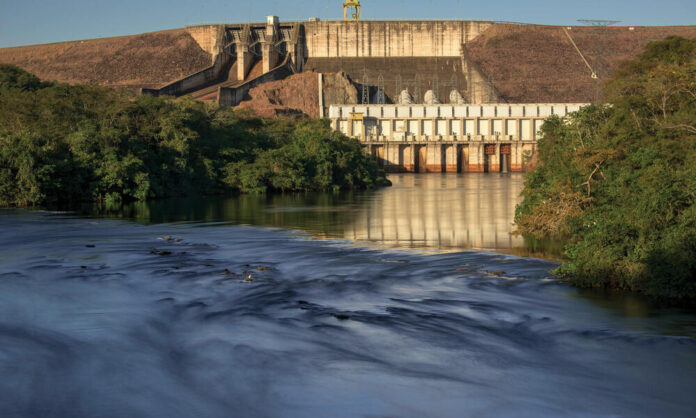Source: World Wildlife Fund
Proposed hydropower dams on free-flowing rivers would collectively generate less than 2% of the renewable energy needed by 2050 to keep global temperature increase below 1.5° C.
A new study published in the journal Global Sustainability finds for the first time that over 160,000 miles of rivers are at risk of losing their free-flowing status due to the proposed construction of new hydropower dams. The total stretch of free-flowing rivers at risk is longer than six times the distance around the Earth. Iconic rivers such as the Amazon, Congo, and Salween are among those that would be severed by hydropower development.
Dams and reservoirs are the leading contributors to connectivity loss in rivers around the world. As global leaders convene for a critical round of UN climate and biodiversity summits this fall, policymakers must consider the tradeoffs between hydropower development and maintaining healthy freshwater ecosystems.
“When it comes to river health, climate change and biodiversity loss, we can no longer afford to think of these as separate issues,” says Michele Thieme, lead freshwater scientist at World Wildlife Fund (WWF) and lead author of the study. “Rivers are powerful agents for keeping wildlife and communities healthy, especially in a warming climate, yet their ability to support life is threatened by hydropower dams in many parts of the world. The best policy solutions will be those that balance renewable energy needs with the many benefits of thriving freshwater ecosystems.”
The study finds that all the proposed dams on free-flowing rivers would collectively generate less than 2% of the renewable energy needed by 2050 to keep global temperature increase below 1.5° C – a small contribution with potentially devastating consequences to remaining free-flowing rivers, and the people and wildlife that depend on them. Connected and healthy rivers deliver diverse benefits that are often overlooked: freshwater fish stocks that improve food security for hundreds of millions of people, delivery of sediments that nourish agriculture and keep deltas above rising seas, and floodplains that help mitigate the impact of floods and support a wealth of biodiversity.
“The future is renewable, so it’s important that we lay out realistic solutions that account for the vast benefits of free-flowing rivers, but also people’s need for clean energy in a warming climate,” says Thieme.
The researchers compiled science-based policy solutions to meet climate targets and energy goals, while also safeguarding free-flowing rivers and their benefits to people and nature. The study outlines specific examples where governments have successfully implemented these strategies, including:
- Avoiding fragmenting rivers by instating formal protections of rivers or by exploring alternative development options, such as non-hydropower renewable energy, like solar and wind. Early, system-wide planning is the best solution to meet development needs and keeps rivers and the benefits that they provide connected and flowing.
- Minimizing the impacts of dams on rivers by siting dams in locations with fewer impacts on people and nature. Technologies such as environmental flows can also help minimize dam impacts by allowing water to move through dams in a manner that mimics natural flows.
- Restoring rivers through dam removal, an increasingly popular option in the U.S. due to the high costs of dam maintenance and the negative impacts on surrounding ecosystems.
- Offsetting the negative impacts of dams. If one river is severed by a dam, there may be options to protect another river to ensure that similar values are maintained in the region.
# # #
Notes
Rivers and freshwater species are in peril. Recent studies show that 2/3 of the world’s longest free-flowing rivers are impeded by dams or man-made infrastructure. There are roughly 60,000 large dams around the world, with over 3,700 more hydropower dams currently proposed or under construction. Populations of freshwater species have already declined by 84% on average since 1970, with degradation of rivers a leading cause of this decline and nearly 1/3 of all freshwater fish face extinction.



